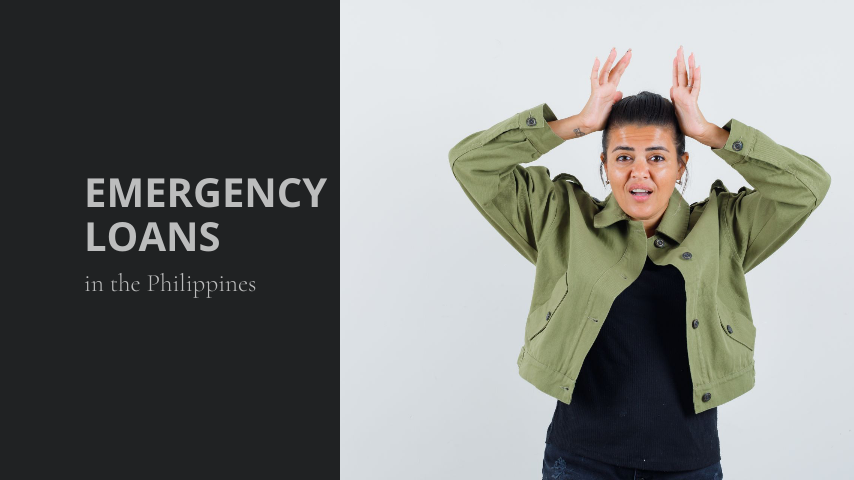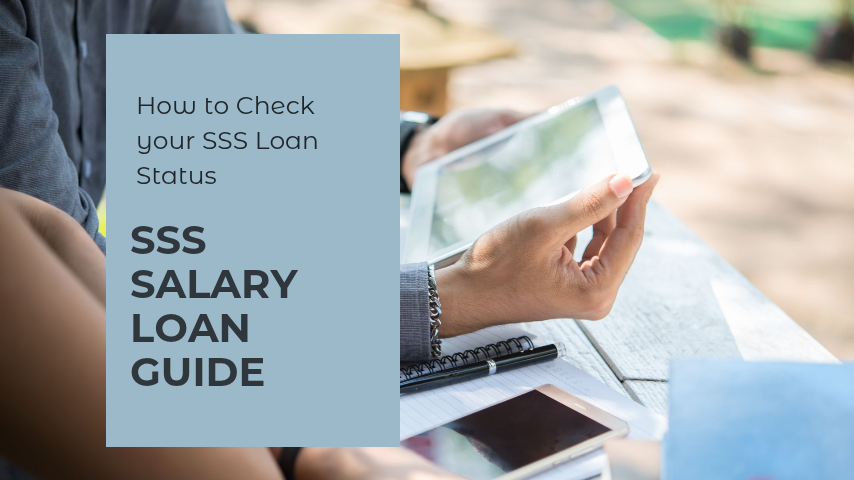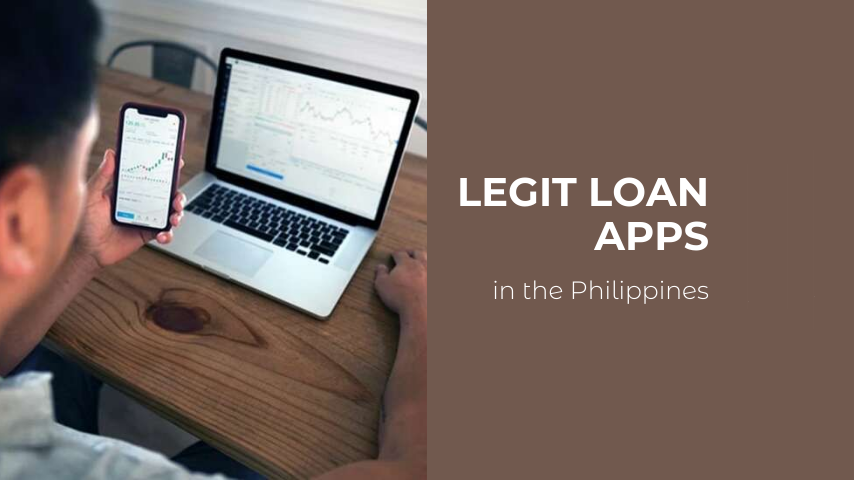Introduction
Financial emergencies can happen to anyone—unexpected medical bills, sudden car repairs, or even a family crisis that requires immediate cash. When savings fall short, many Filipinos turn to emergency loans for fast financial relief. Thankfully, in today’s digital age, getting quick cash is easier than ever with online loans, loan apps, and other convenient lending options.
The Philippines has seen a surge in online loan apps, offering instant approvals with just a few taps on your smartphone. From GCash’s GGives and Maya Credit to Tala and Cashalo, these platforms provide accessible funds even without a traditional bank account. But with so many choices—from bank personal loans to online loans apps and government-backed programs—how do you pick the best and safest option?

This guide will break down the top emergency loan solutions in the Philippines, comparing interest rates, requirements, and processing times. Whether you need a small cash boost or a larger loan, we’ll help you find the right option—while avoiding scams and unmanageable debt.
Stay informed, borrow wisely, and take control of your financial emergencies. Let’s explore your best options!
What are emergency loans
Emergency loans are short-term financial solutions designed to provide immediate cash during urgent situations. Unlike traditional loans that may take days or weeks to process, these are meant for quick disbursement, often within hours or even minutes. Their primary purpose is to help individuals cover unexpected expenses when personal savings or regular income aren’t enough.
In the Philippines, the demand for fast financial assistance has grown significantly, driven by rising costs of living and unforeseen crises. Many Filipinos now rely on online loan apps, banks, and microfinance institutions for emergency funds due to their speed and convenience. Digital lending platforms, in particular, have gained popularity because they allow borrowers to apply anytime, anywhere—without lengthy paperwork or bank visits.
Common emergencies that prompt people to seek these loans include:
- Medical bills – Hospitalizations, surgeries, or sudden illnesses
- Natural disasters – Typhoons, floods, or earthquakes that damage homes or livelihoods
- Job loss or reduced income – Sudden unemployment or salary cuts
- Education expenses – Tuition fees or school-related emergencies
- Vehicle or home repairs – Urgent fixes needed for daily survival
While emergency loans offer a lifeline during tough times, borrowers should compare options carefully—especially when using online loan apps, as some charge high interest rates. Understanding terms, repayment schedules, and lender credibility can help avoid debt traps while securing much-needed financial relief.
For Filipinos facing sudden monetary gaps, emergency loans—when used responsibly—can be a practical way to bridge financial crises and regain stability.
Kinds of Emergency Loans in the Philippines
When financial emergencies strike, Filipinos have multiple borrowing options to consider. Each type of emergency loan serves different needs based on amount requirements, urgency, and repayment capacity. Below is an in-depth look at the eight main types of emergency financing available in the Philippines.
Traditional Bank Personal Loans
Traditional bank loans remain one of the most reliable options for substantial emergency funding. Major banks like BDO, BPI, and Metrobank offer personal loan bank products with amounts ranging from ₱20,000 to ₱2 million. These loans typically feature lower interest rates (1-2% monthly) and flexible repayment terms of 12-60 months. The loan application process has become more convenient with online submissions, though approval still requires good credit history and proof of stable income. While processing takes 1-3 business days, these loans are ideal for planned emergencies or larger expenses.
Pros:
✔ Lower interest rates
✔ Longer repayment terms
✔ Higher loan amounts
Cons:
✖ Strict eligibility (good credit score, stable income)
✖ Slower approval (1-3 days or longer)
Where to Apply:
- BPI Personal Loan
- BDO Cash Loan
- Metrobank Personal Loan
- Security Bank Quick Cash
Many banks now offer a fully digital loan application, allowing borrowers to apply online and receive funds in their accounts within 24-48 hours.
Digital Bank Loans
Digital banks like Tonik, Maya Bank, and UnionDigital now offer faster alternatives to traditional bank loans. These institutions provide fully online loan application processes with quicker approvals – often within 24 hours. Loan amounts are generally smaller (₱10,000-₱100,000) but come with competitive interest rates. The convenience of managing everything through a mobile app makes digital bank loans increasingly popular among tech-savvy borrowers who need faster access to funds than traditional banks offer.
Online Lending Apps
For immediate cash needs, quick loans online through lending apps like GCash (GGives), Tala, and Cashalo have become go-to solutions. These platforms offer cash loans online ranging from ₱1,000 to ₱50,000 with approval in as little as 15 minutes. The application requires minimal documents – usually just a valid ID and proof of income. While extremely convenient, these online loans with monthly payments in the Philippines often carry higher interest rates (5-20% monthly) and shorter repayment periods (15-90 days). They’re best for small, urgent expenses when other options aren’t available.
Popular Online Loan Apps:
- GCash (GGives) – Offers credit lines up to ₱50,000
- Maya Credit – Instant loans up to ₱25,000
- Tala – Fast disbursement via GCash or bank
- Cashalo – Loans up to ₱20,000 with flexible terms
Pros:
✔ Instant approval (minutes to hours)
✔ No collateral needed
✔ Accessible even without a bank account
Cons:
✖ Higher interest rates (up to 20% monthly)
✖ Short repayment periods (often 15-30 days)
These apps are ideal for small emergencies, but borrowers should compare fees before applying.
Government Salary Loans
Government institutions like SSS, Pag-IBIG, and GSIS provide emergency loan programs for their members. SSS salary loans offer up to ₱100,000 with low 10% annual interest, while Pag-IBIG’s multi-purpose loan allows borrowing up to 80% of total savings. These online loans with monthly payments in the Philippines feature the most affordable rates but require membership contributions and typically take 3-7 days to process. Government loans are excellent for employed individuals who need medium amounts with manageable repayment terms.
- SSS Salary Loan – Up to ₱100,000 for members
- Pag-IBIG Multi-Purpose Loan – Up to 80% of savings
- GSIS Emergency Loan – For government employees
Pros:
✔ Lowest interest rates (6-10% per annum)
✔ Flexible repayment terms
Cons:
✖ Limited to members only
✖ Processing may take 3-7 days
Credit Card Cash Advances
Credit cardholders can access emergency funds through cash advances, typically up to 50% of their credit limit. While convenient (available 24/7 at ATMs), this option comes with high fees – usually 3-5% of the withdrawn amount plus daily interest of about 0.5%. The lack of a separate loan application process makes this appealing for immediate needs, but the costs add up quickly if not repaid promptly. It’s best reserved for genuine emergencies when no better options exist.
Pros:
✔ Instant access to cash
✔ No separate loan application needed
Cons:
✖ High fees and interest
✖ Limited to cardholders only
Pawnshop Loans (Sangla)
Pawnshops like Cebuana Lhuillier and Palawan Pawnshop offer collateral-based loans with no credit checks. By pawning jewelry, gadgets, or other valuables, borrowers can get quick loans online or in-person within minutes. Loan amounts depend on the item’s appraised value (typically 50-70% of market price). Interest rates are reasonable (2-5% monthly), but failure to repay means losing the pledged item. This option works well for those needing instant cash without paperwork or credit requirements.
Pros:
✔ No credit checks
✔ Cash in minutes
Cons:
✖ Risk of losing collateral
✖ Low valuation of items
Cooperative and Microfinance Loans
Community-based cooperatives and microfinance institutions provide small emergency loans with more flexible terms than traditional lenders. Organizations like ASA Philippines and Center for Agriculture and Rural Development (CARD) offer loans from ₱5,000 to ₱50,000 with weekly or monthly payments. Interest rates are higher than banks but lower than online loan apps. These loans are particularly valuable for small business owners or individuals in rural areas with limited access to formal banking.
Pros:
✔ Easier approval
✔ Lower interest than online lenders
Cons:
✖ Limited loan amounts
✖ Membership often required
Employer or Company Loans
Some companies offer salary advance programs or emergency loan assistance to employees. These arrangements typically involve deducting repayments directly from future salaries. Terms vary by employer but often feature low or no interest. While not available to everyone, this can be the most affordable emergency loan option for eligible workers who need short-term financial relief.
Choosing the Right Emergency Loan
Selecting the best emergency loan depends on several factors:
- Urgency: Digital options provide fastest access (minutes to hours)
- Amount Needed: Banks offer highest limits (up to ₱2M)
- Repayment Capacity: Monthly installments ease budgeting
- Credit Situation: Online lenders are most lenient
- Cost: Government loans have lowest interest
Before submitting any loan application, borrowers should carefully compare all available options. While quick loans online solve immediate needs, their high costs can lead to debt traps if not managed properly. Traditional bank loans offer better terms for those who can wait a few days. Government programs provide the most affordable solution for qualified applicants.
Emergency loans serve as crucial financial safety nets, but responsible borrowing is essential. Always:
- Borrow only what you need
- Understand all fees and repayment terms
- Have a concrete repayment plan
- Explore alternatives before committing
- Verify lender legitimacy (check SEC/BSP registration)
By understanding these eight emergency loan options, Filipinos can make informed decisions when financial crises arise. Whether opting for a personal loan bank product, online loans with monthly payments in the Philippines, or other alternatives, the right choice depends on individual circumstances and needs. Proper research and careful consideration will ensure you select the most suitable emergency financing solution.
How to Choose the Best Emergency Loan
When facing a financial emergency, selecting the right loan option can mean the difference between quick relief and long-term debt stress. With numerous choices available—from bank loans to quick loans online —it’s crucial to evaluate your options carefully. Here’s how to choose the best emergency loan for your needs.
- First, assess the urgency and amount needed. If you require cash immediately, online loan apps like GCash or Tala can provide funds within hours, though at higher interest rates. For larger amounts (₱50,000 and above), a traditional personal loan bank offering may be better, despite the longer processing time.
- Next, compare interest rates and fees. Banks and government loans (SSS, Pag-IBIG) typically offer the lowest rates, while cash loans online often charge significantly more. Always check the annual percentage rate (APR), which includes all fees, to understand the true cost.
- Review repayment terms carefully. Some online loans with monthly payments in the Philippines allow flexible installments, while others demand full repayment in weeks. Choose a plan that aligns with your income cycle to avoid missed payments and penalties.
- Check eligibility requirements. Traditional lenders require good credit scores and documents, while online loan apps may only need a valid ID and proof of income. If you have poor credit, digital lenders or pawnshop loans might be more accessible.
- Finally, verify the lender’s legitimacy. Ensure they are registered with the SEC or BSP to avoid scams. Read reviews and watch for red flags like upfront fees or unclear terms.
By considering these factors—urgency, cost, repayment terms, eligibility, and lender credibility—you can secure the best emergency loan without falling into a debt trap. Borrow wisely, and prioritize options that offer both speed and affordability.
Requirements & Application Process
When applying for an emergency loan in the Philippines, understanding the requirements and process can help you secure funds faster and with less hassle. Different lenders—from banks to online platforms—have varying eligibility criteria and application steps. Here’s a breakdown of what you need and how to apply for the most common emergency loan options.
General Requirements
Most lenders require the following basic documents:
- Valid government-issued ID (e.g., passport, driver’s license, UMID, or PhilSys ID)
- Proof of income (payslips, bank statements, or ITR for employed borrowers; business permits or financial records for self-employed individuals)
- Proof of billing or address (utility bills or barangay certification)
- Active mobile number and email address (for online lenders)
Additional requirements may include:
- Credit score checks (for banks and some digital lenders)
- Collateral (for secured loans like pawnshop or auto title loans)
- Membership proof (for SSS, Pag-IBIG, or GSIS loans)
Application Process for Different Lenders
Bank Personal Loans
- Choose a bank (e.g., BPI, BDO, Metrobank) and check eligibility.
- Submit documents online or in-branch.
- Wait for approval (1-3 business days).
- Sign loan agreement and receive funds via bank transfer.
Tip: Some banks offer pre-approved loans to existing customers with good credit history.
Online Lending Apps (GCash, Tala, Maya)
- Download the app and create an account.
- Complete the application form (takes 5-10 minutes).
- Upload required documents (some apps only need an ID).
- Get instant approval (minutes to hours).
- Receive funds via e-wallet or bank account.
Note: Loan amounts depend on your creditworthiness, often starting at ₱1,000.
Government Loans (SSS, Pag-IBIG, GSIS)
- Log in to your member account on the official website.
- Submit an online application and upload documents.
- Wait for processing (3-7 days).
- Receive disbursement via salary deduction or bank deposit.
Tip: SSS and Pag-IBIG loans require active contributions for at least 6-12 months.
Pawnshop Loans
- Bring collateral (jewelry, gadgets, etc.) to a pawnshop.
- Get item appraised (loan amount is 50-70% of value).
- Receive cash immediately after signing the agreement.
Approval Tips
- Maintain a good credit score for better loan terms.
- Compare lenders to find the lowest interest rates.
- Avoid multiple applications —too many credit inquiries can hurt your score.
- Read the fine print to avoid hidden fees.
By preparing the right documents and following the correct process, you can secure an emergency loan quickly and efficiently. Always borrow responsibly and ensure you can meet repayment terms to avoid financial strain.
Risks & Precautions of Emergency Loans in the Philippines
While emergency loans provide quick financial relief, they come with significant risks that borrowers must consider. One major concern is high interest rates, especially with online lending apps and cash advances, which can reach 20% monthly—potentially trapping borrowers in cycles of debt. Many lenders also impose hidden fees, including processing charges, late penalties, and rollover costs that dramatically increase the total repayment amount.
Another risk involves predatory lending practices. Some unregulated online lenders harass borrowers through unethical collection methods, including public shaming or threatening messages when payments are delayed. There’s also the danger of loan scams, where fake lenders ask for upfront fees but never disburse funds.
To protect yourself, always verify lenders through the SEC or BSP website before applying. Read the fine print to understand all terms, fees, and repayment schedules. Avoid borrowing more than you can repay, and prioritize loans with the lowest APR. If possible, explore safer alternatives like salary advances, government assistance programs, or borrowing from trusted family and friends.
Responsible borrowing ensures emergency loans remain a temporary solution rather than a long-term financial burden. Stay vigilant, compare options carefully, and never rush into a loan agreement without full transparency.
Alternatives to Emergency Loans
Before resorting to high-interest emergency loans, consider these safer financial alternatives available in the Philippines. Borrowing from family or friends often comes with little to no interest and flexible repayment terms, though it’s important to treat these arrangements as formally as bank loans to preserve relationships.
Government assistance programs like DSWD’s Assistance to Individuals in Crisis Situations (AICS) provide cash aid for medical, burial, or transportation emergencies without repayment requirements. Many local government units also offer crisis support programs for qualified residents.
For employed individuals, requesting a salary advance from employers is typically interest-free and deducted from future paychecks. Members of cooperatives can access emergency member loans with lower rates than commercial lenders.
Selling unused items online or through pawnshops (without loan terms) can generate quick cash without debt obligations. Digital platforms like GCash’s GSave or Maya Savings allow users to build emergency funds gradually through automated savings features.
Community-based solutions like paluwagan (rotating savings groups) or crowdfunding through platforms like Gava or Ayuda also provide interest-free alternatives. By exploring these options first, Filipinos can address financial emergencies without falling into costly debt cycles.
Brief summary about emergency loans in the Philippines
| Institution | Loan Type | Loan Amount | Interest Rate | Term | Eligibility | Key Features |
| SSS (Social Security System) | Salary Loan (Emergency Loan) | Up to ₱20,000 (1 month salary) | 10% per annum | 24 months | Active SSS member with at least 36 contributions | Fast disbursement for calamities, illnesses, etc. |
| GSIS (Government Service Insurance System) | Emergency Loan | Up to ₱40,000 | 6% per annum | 3 years | GSIS members (gov’t employees) | For disasters, medical emergencies, or crises. |
| Pag-IBIG Fund | Calamity Loan | Up to 80% of savings (max ₱40,000) | 10.5% per annum | 24–36 months | Active Pag-IBIG member | For declared calamities (typhoons, earthquakes). |
| Landbank | Emergency Loan (for OFWs, farmers, etc. | Varies (up to ₱1M for OFWs) | 7–10% p.a. | Flexible | OFWs, farmers, SMEs | Low-interest, collateral options available. |
| Simbank (BPI, BDO, etc.) | Personal Loan / Quick Cash | ₱20,000 – ₱2M | 10–24% p.a. | 12–60 months | Employed with good credit | Fast approval for existing bank customers. |
| Online Lenders (Tala, GCash, etc.) | Short-Term Cash Loan | ₱1,000 – ₱50,000 | 5–20% monthly | 7 days – 12 months | Valid ID, mobile wallet | Instant approval but high interest rates. |
| Cooperative Loans | Emergency Assistance | ₱5,000 – ₱100,000 | 1–5% monthly | 6–24 months | Cooperative member | Lower rates for members in need. |
Notes:
- Government Loans (SSS, GSIS, Pag-IBIG) have the lowest rates but require membership/contributions.
- Banks offer higher amounts but need proof of income/collateral.
- Online Lenders are fastest but risky due to high interest.
- Always verify terms with the lender and avoid loan sharks.
Conclusion
Financial emergencies can happen to anyone, but being informed empowers you to make smart decisions when urgent needs arise. Throughout this guide, we’ve explored the various emergency loan options available in the Philippines—from traditional bank loans and government assistance programs to convenient but higher-risk online lending apps. Each option serves different needs, whether you require quick cash for medical bills, home repairs, or sudden unemployment.
While emergency loans provide immediate relief, they should be approached with caution. High interest rates, hidden fees, and aggressive collection practices can turn a short-term solution into a long-term financial burden. Always compare lenders, read the fine print, and borrow only what you can repay. Safer alternatives—such as salary advances, community support, or selling unused items—may better serve your situation without the risks of debt traps.
Ultimately, the best defense against financial emergencies is preparation. Building an emergency fund, even through small, regular savings, can help you avoid borrowing altogether. When loans are unavoidable, choose the most affordable and reputable option available.
By staying informed and borrowing responsibly, you can weather financial storms while protecting your future stability. Remember: emergency loans are a temporary bridge, not a permanent solution. Plan wisely, act cautiously, and prioritize your long-term financial health above all else.











